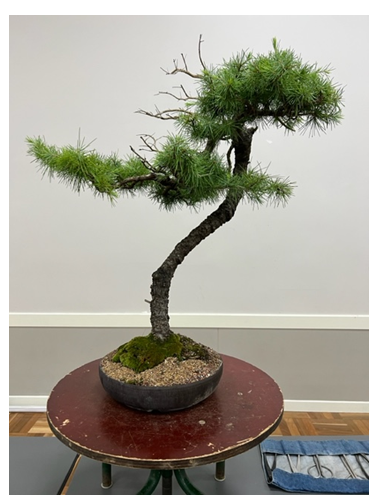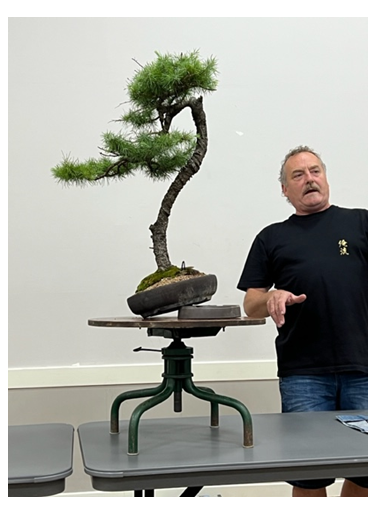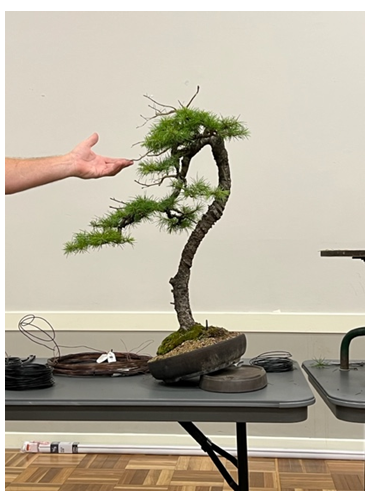Last month, Tony chose cedar from the display table to work on. He likes the tall, graceful style of literati trees and this was an elegant tree in need of a new eye and some refinement.

Tony’s plan was to reduce the foliage all over the tree but particularly the apex, wire primary branches to a better positions, to reduce and delineate the remaining pads and change the planting angle to lower the first branch.
Cedars take a long time to set, and scars take a long time to heal. Tony started with the first branch, explaining that he likes to avoid this happening whenever possible and to do so he puts tiny cuts in three or four places into the cambium layer using closed scissors. He wired, bent and stretched the branch and then made small stabs/ cuts on the outside of the bend. He left the branch for a while and then stretched and bent again. The branch can ‘fix’ in a year but Tony likes to leave the wire on as long as possible, even allowing it to bite a little as the cedar’s rough bark easily hides this. Tony then reduced the mass of this branch leaving three pads one of which crossed the trunk. He carefully pruned the to promote new growth.

While the apex needs a good structure and a full roundness to create the illusion of a mature tree the cedar’s apex was too strong. Tony thinned it out keeping the openness, used a guy wire to drop the right hand side of the apex and the nicked the cambium to aid quicker setting.

